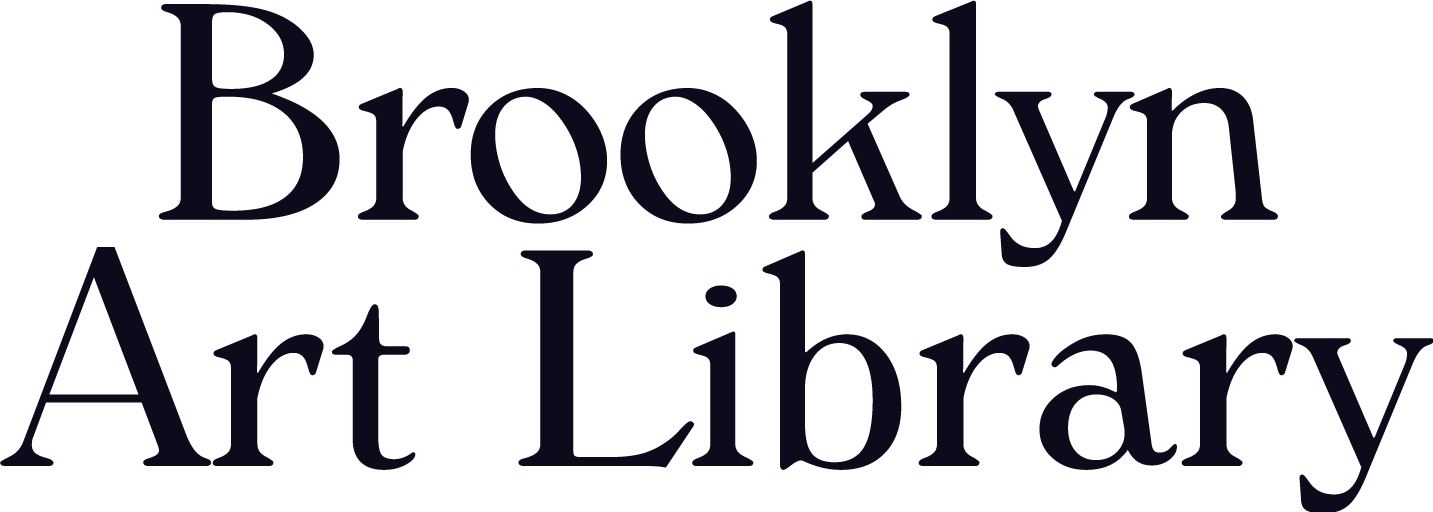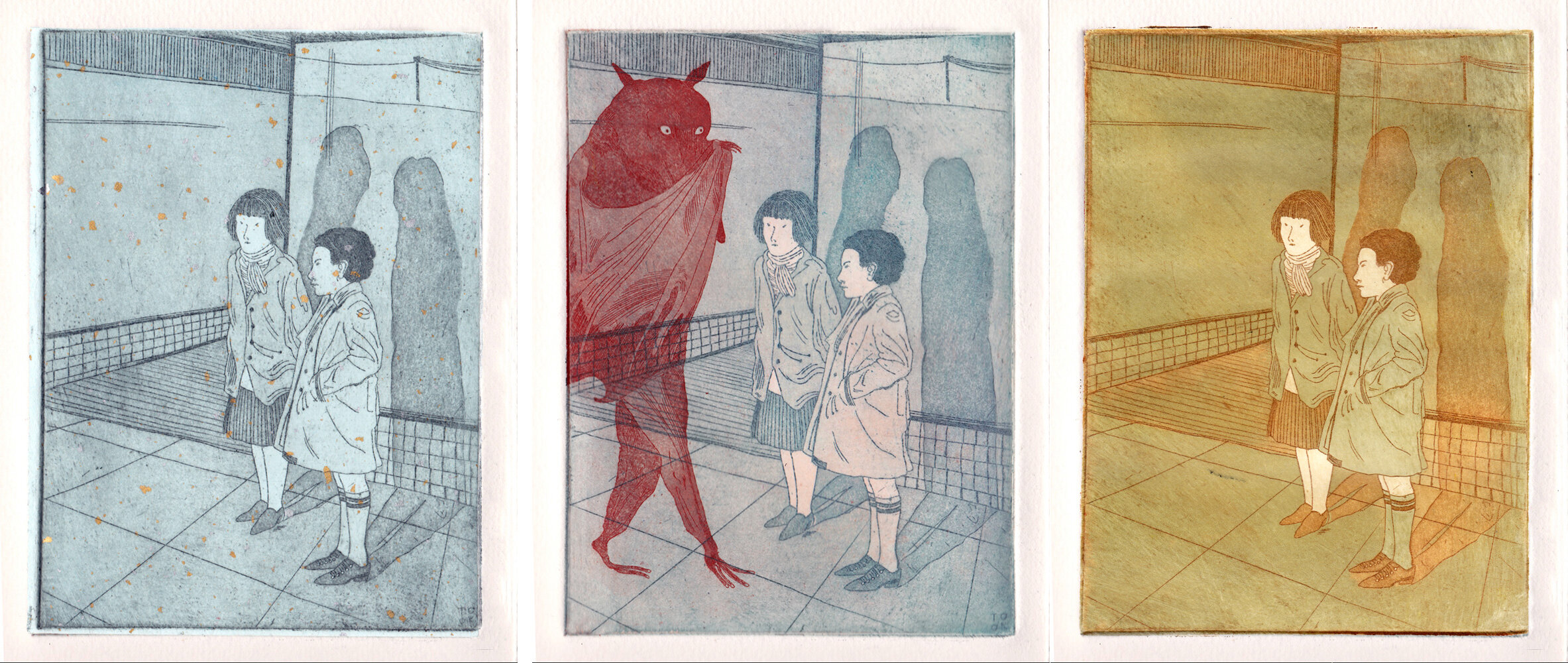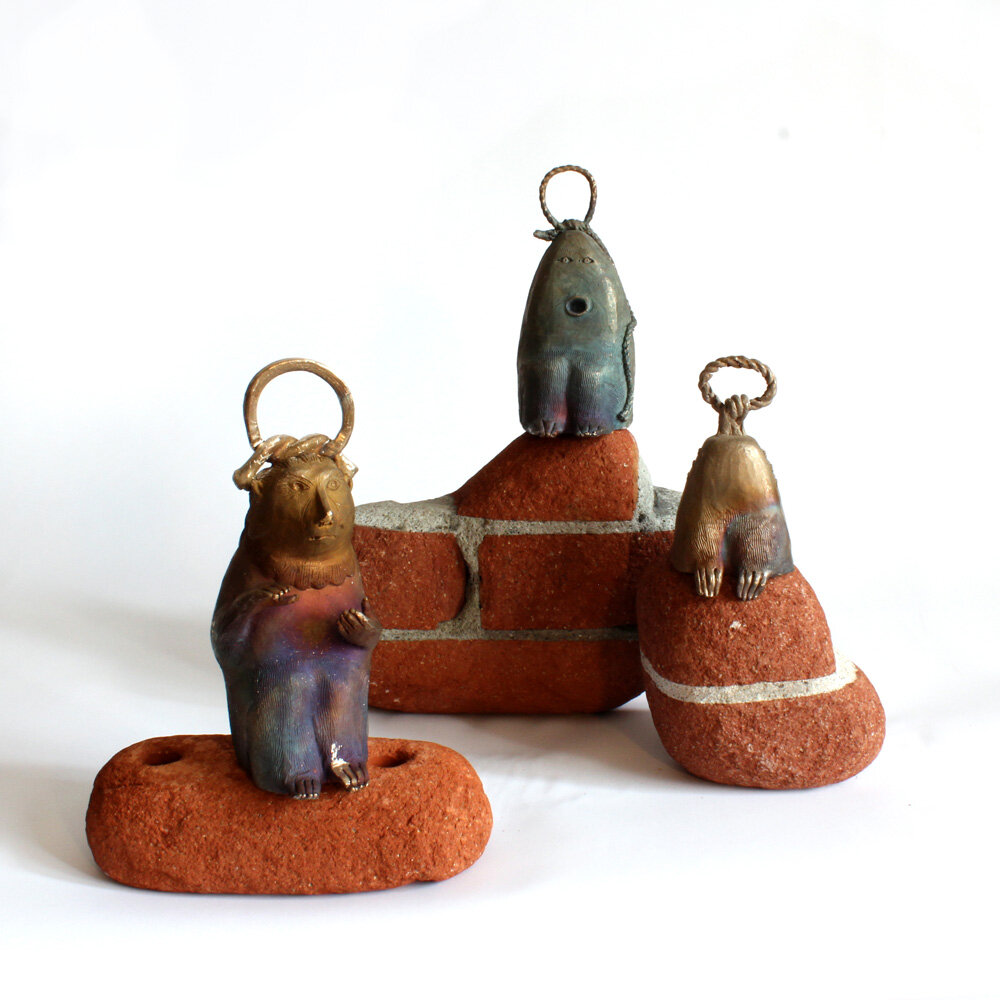Small Talks: Toko Hosoya
Toko Hosoya is an illustrator, sculptor, and animation artist born in Japan and currently living in Toronto. A prolific artist from a young age, Hosoya’s unique art style is rich with whimsical characters, experiments in geometric shape and intricate line-work, and she’s not afraid to dabble in new materials and mediums, like bronze casting, to tell fantastical stories and share her observations. In 2017, Toko earned a gold medal for her work from the Society of Illustrators in New York, and her art has been exhibited across Canada. She recently earned a degree in illustration from Ontario College of Art and Design. You can see more of her sculpture, illustration, and animation projects on her website and keep up with her newest creations through Instagram.
Your 2014 sketchbook, “Welcome To The Mushroom Society,” is such a delightful collection of surreal, detailed pen illustrations and collages. Can you talk about what the process was like creating your sketchbook spreads?
I carried it around with me for a few weeks and stuck ideas and images I liked into it. Back then, I’d stick so many things into my sketchbooks they’d all end up in a sort of cheese shape. The spreads weren’t really planned, and I consider sketchbooks to be like a capsule of whatever was on my mind during that time. There are a lot of maps in this one probably because, at the time, I vehemently wanted to get out of the city I grew up in.
You completed this sketchbook at the end of your sophomore year of high school. How have you noticed your own art style change since you first made this sketchbook seven years ago?
I’ve come to appreciate ugliness more. I try to let it remain in everything I make.
Your imagery and style is so distinct and full of whimsy, with a meticulous attention to character design and storytelling. Where do you find inspiration for your creations?
I find inspiration in most things—nature, pavement varieties, music. I recently moved right behind my least favorite mall in the city, and I get inspired looking at it from my bedroom window in the mornings. I try not to think about any of it too hard. Occasionally, I get fully formed images in my mind, but most of the time it’s just different aspects of my life that I regurgitate in new forms and combinations. This mall will probably find its way into my work at some point.
When did you first begin making art?
Growing up, my sister was the artist of the family, and I started because as the younger sibling, I always wanted to be in on whatever she was doing. She ended up going into film, but I stuck with this because I found that I don’t have much patience for many other things.
Do you have advice for budding illustrators looking to refine and build on their personal style?
I’m not sure if style is as important as it’s often made to seem. Draw for yourself first, and don’t get hung up about if your work will be agreeable to others or distinct enough. Look at lots of things from many different sources. Try to look at things not many people are looking at. Be a sponge. If you follow your reactions to what you’re making, I feel that style will inevitably follow.
Do you keep a sketchbook as part of your daily practice? Do you find that sketching helps with your illustrations, paintings, and projects in other mediums?
I do! For me, they’re the starting point for nearly everything. These days, I do quite a bit of writing in them as well as drawing. When I’m planning a project, I’ll often dig through a few of my recent books and gather relevant bits and pieces that I can use. I try to keep my sketchbook as a space of pure process and enjoyment, so that I always have an outlet even if I’m going through a block in my other pursuits.
Along with 2D illustration, you have been working on animated images, most recently for the band, Moneyphone. When did you begin to branch out into animation? How has your creative process evolved with the production of these moving images?
I began just last year. It came pretty naturally because even when I do regular drawings, I feel as though I’m capturing a still in a sequence that I can easily imagine as continuous. I’ve really enjoyed the process of experimenting and figuring out how animation can fit in best with what I personally like to do. It’s much more versatile than I thought. I’ll be able to incorporate more metamorphosis into my work, which feels exciting and new to me.
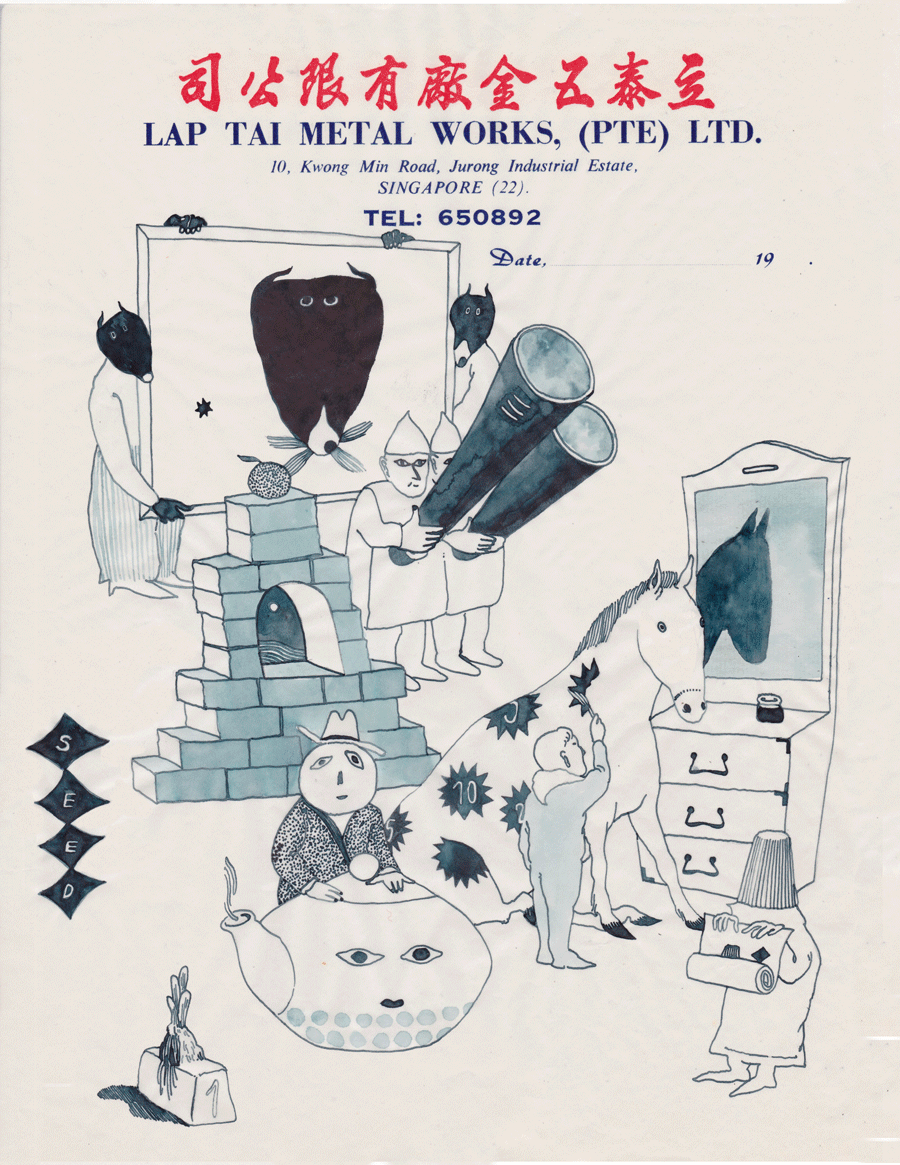
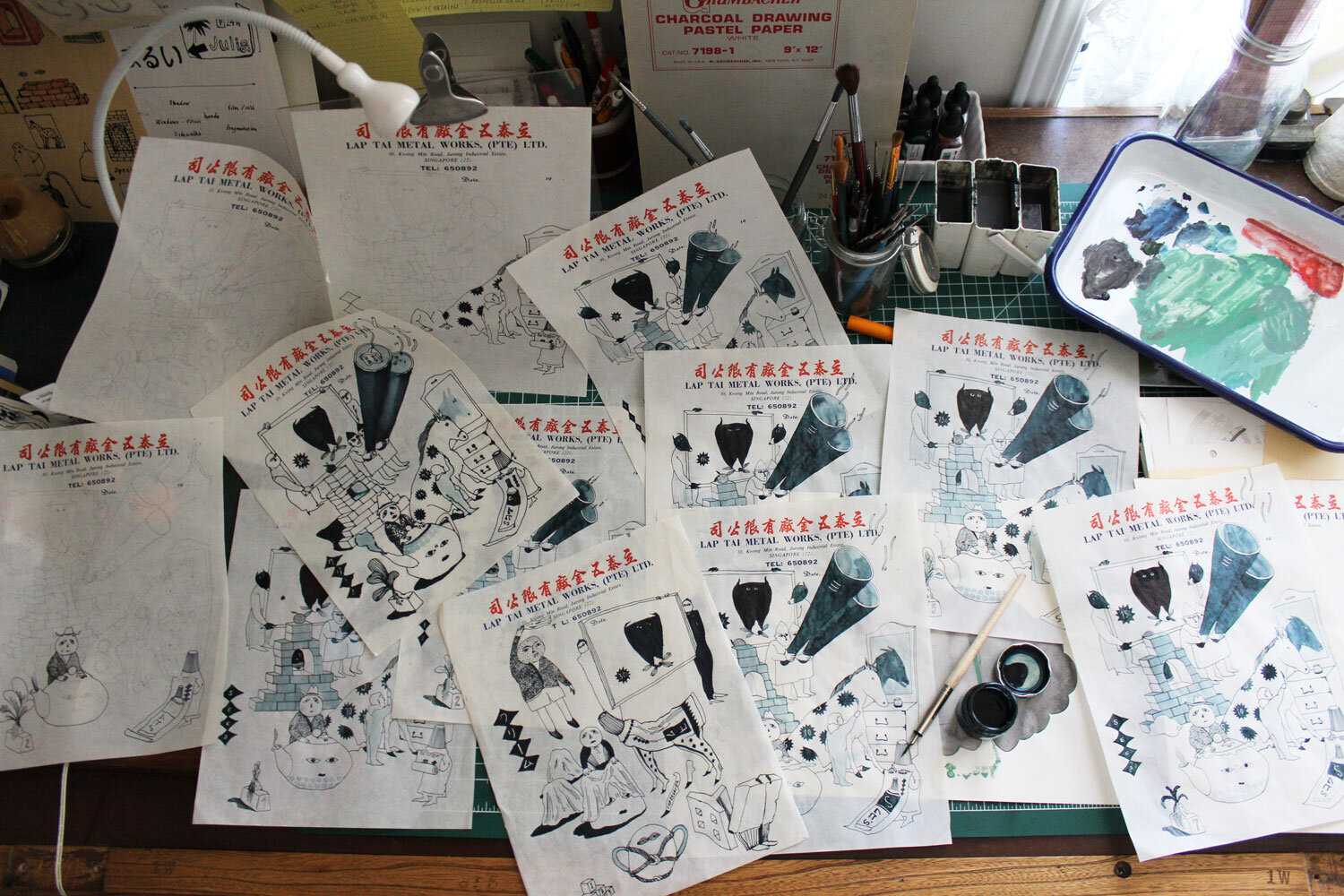
What are some art supplies that you can’t live without?
My Pilot Parallel pen. It smudges a lot and bleeds through just about everything but I’m very loyal to it. I broke my first one a couple years ago and lost another. I’m on my third now. I’ll give an honorable mention to my lightbox too. I did most of my first animations using a piece of plexiglass and a lamp. Wouldn’t recommend it.
Along with mixed-media illustration, you also create sculptures of figures and motifs pulled from the natural world. How do you see sculpture fitting into your creative practice? Are there any projects or experiments with sculpting you are currently working on or hope to work on in the future?
I’ve loved sculpting for a long time, so I don’t really see it as something I have to fit into my creative practice. It’s always been there! I favor drawing only because it’s more accessible. I started experimenting with bronze a couple years ago, along with textile work and printmaking. At times, I did wonder if I was being pulled in too many different directions, but I find that each of these things feeds into the others. I plan for it to all come together in the near future—perhaps as publications, installations or films.
Your work has been exhibited at Mark Christopher Gallery and Graven Feather Gallery. What was it like compiling your artwork and curating pieces to share with visitors? Would you like to exhibit your work in galleries again?
Some of my favorite memories from my childhood are from when my mother used to take my sister and I to galleries, so it felt surreal to be on the other side of that. I was pretty young when the shows took place and I didn’t really know what I was doing, but that made it all feel less daunting. I’d love to exhibit again, particularly with my sculptural work. My next show will probably look nothing like any of my past shows.
Who are some artists that influenced your own creative development?
The Propeller Group, Erwin Wurm, and Enya.
How can people support your work?
I appreciate any level of engagement people have with it. I’ll be posting updates on new projects on my Instagram. I also occasionally have original work available through Mark Christopher Gallery.
